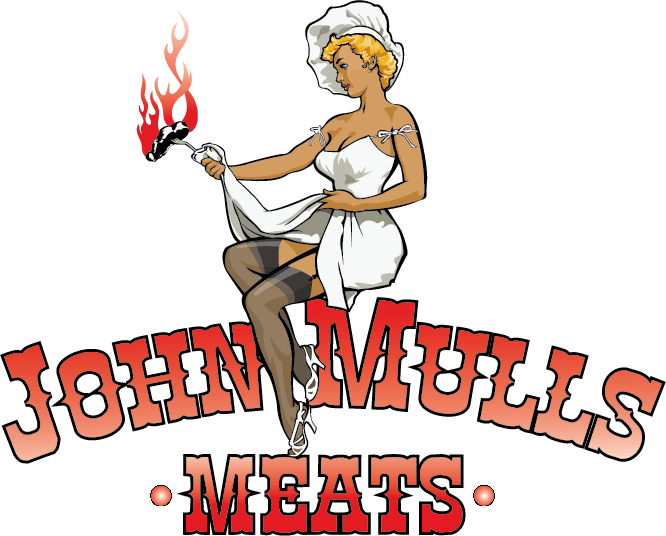The Battle of Backyard BBQ: Smoked vs. Grilled
If you love barbecue, you’ve probably wondered: Is slow-smoking better than grilling? While both techniques are staples in the world of BBQ, they serve very different purposes. One delivers quick char and sizzle. The other? Rich, deep flavor that’s been developing for hours.
At John Mull’s Meats & Road Kill Grill—featured on Diners, Drive-Ins and Dives with Guy Fieri—we’ve spent generations perfecting the art of barbecue. And we’re here to settle the score by breaking down the pros, cons, and flavor results of both methods.
What Is Grilling?
Grilling is a high-heat cooking technique that involves placing food directly over a flame—whether it’s gas, charcoal, or wood. It’s the classic method for quick-cooking meats like:
- Hamburgers
- Steaks
- Hot dogs
- Chicken breasts
- Pork chops
- Veggies and kebabs
Grilling is beloved for its speed and signature char marks. Most grilling happens at 400°F to 550°F, making it perfect for thinner cuts that benefit from a seared exterior and juicy center.
Pros of Grilling:
- Fast cook time (often under 15 minutes)
- Satisfying sear and grill marks
- Great for summer cookouts or quick meals
- Portable with small equipment
Cons of Grilling:
- Limited flavor depth beyond the surface
- Higher chance of overcooking or drying out meat
- Less suitable for large or tough cuts
What Is Slow-Smoking?
Slow-smoking, or “low and slow” cooking, involves indirect heat and hardwood smoke to cook meat over a long period—sometimes as long as 16 hours. Temperatures typically range from 200°F to 275°F, allowing collagen and fat to break down gently.
This technique is ideal for tougher cuts like:
- Brisket
- Pork shoulder (pulled pork)
- Ribs
- Sausages
- Turkey legs
- Beef chuck and oxtail
Pros of Smoking:
- Infuses meat with complex, smoky flavor
- Produces incredibly tender results
- Creates bark (crust) that locks in juices
- Ideal for batch cooking or event prep
Cons of Smoking:
- Time-intensive (plan ahead)
- Requires more specialized equipment
- Higher learning curve for beginners
Flavor Breakdown: Which Method Wins?
Grilling Flavor:
Grilled meat is all about the exterior texture and caramelization from the Maillard reaction. While it’s fast and flavorful, most of that taste is locked to the surface of the meat.
Best for: Steak lovers, quick skewers, charred veggies, and summer get-togethers.
Smoked Flavor:
Slow-smoking allows smoke to penetrate the entire cut. It enhances the natural flavor of the meat while infusing it with the aroma of hickory, mesquite, cherrywood, or oak.
Best for: Deep, hearty BBQ dishes like brisket, pulled pork, and ribs.
BBQ Expert Insight: Why We Smoke at John Mull’s
At John Mull’s Road Kill Grill, smoking isn’t just a cooking method—it’s an obsession. We slow-smoke meats for up to 16 hours, tumble them in custom rubs crafted by owner Chuck Frommer, and let the smoke do the talking.
We believe BBQ should be rich, soulful, and unforgettable—and that takes time. Each brisket, rib tip, or pulled pork sandwich that hits our counter carries layers of smoky goodness, thanks to our heritage recipes and low-temp cooking philosophy.
Whether you’re a seasoned pitmaster or just starting out, there’s no substitute for what slow-smoking can do.
When to Use Each BBQ Method
| Situation | Choose Grilling | Choose Smoking |
| Weeknight dinner | Quick, efficient | Too time-intensive |
| Backyard party | Easy for burgers and hot dogs | Great for prep-ahead meats like ribs |
| Holiday or large gathering | May require constant flipping | Perfect for brisket or pulled pork |
| Showcasing BBQ flavor | Limited smoke infusion | Complex, deep flavor from hours of smoke |
| Cooking large cuts (over 2 lbs) | Risk of uneven cooking | Even, slow breakdown of fat and collagen |
Tools of the Trade
For Grilling:
- Gas or charcoal grill
- Tongs and spatula
- Grill brush
- Instant-read thermometer
For Smoking:
- Offset smoker or pellet grill
- Wood chips (hickory, cherry, oak)
- Water pan for moisture retention
- Meat thermometer for long cook times
Want to get started with smoking? Our Las Vegas meat market has everything you need—from premium cuts to seasoning blends.
Health Considerations
Smoking generally uses indirect heat, which reduces harmful charring. Grilling can produce compounds like HCA and PAHs if meats are overcooked or burnt. Regardless of method, avoid flare-ups, trim excess fat, and marinate meats to reduce these risks.
At John Mull’s, we ensure safe food handling at every step—from butchering to smoking to serving.
Real-World Taste Test: Smoked vs. Grilled
Our customers often tell us there’s just no comparison—slow-smoked BBQ wins every time. Why?
- Juicier texture
- More complex flavor
- Distinct bark (crust)
- Longer-lasting satisfaction
A grilled steak might hit the spot for a quick bite, but a slow-smoked brisket sandwich from Road Kill Grill? That’s a memory.
Where to Taste Both in Las Vegas
If you’re in town and craving barbecue, come visit the Road Kill Grill. Whether you’re in the mood for:
- Smoked brisket
- Pulled pork
- BBQ chicken
- Mac & cheese
- Or loaded BBQ platters
We’ve got it smoking hot and ready to go—either for dine-in or takeout.
Final Take: What’s the Best BBQ Method?
If convenience is your goal, grilling takes the crown.
But if you’re chasing flavor—the kind that brings people together and gets featured on national TV—slow-smoking is king.
At John Mull’s Meats & Road Kill Grill, we stand behind the pit, not just the plate. Our BBQ tells a story of tradition, patience, and passion.

